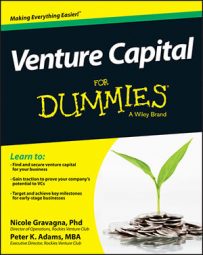When a fund is closed, the venture capital (VC) company has to collect applications from companies who want to be funded. Having a constant stream of interested companies is called deal flow.
If a venture capital firm hopes to fund the best companies, it strives for good deal flow, which means that the firm sees a lot of companies every day. Then the VC firm screens through deal flow, invites companies to pitch, and begins due diligence on the companies it likes.
A typical VC may invest in only one or two deals a year after screening hundreds of deals. So don’t get discouraged if you’re rejected by the first couple of VCs that you talk to.
In fact, one company analyzed its $1 million raise to understand how to make the fundraising process more efficient in the future and discovered that it talked to more than 50 VCs and more than 50 angel investors before closing the round. You can’t get discouraged by the first few no’s. If your company is making steady progress, then you’ll find the right investor eventually.
VCs typically look at 100 or more deals for every one that they invest in. The entire process is a series of go/no-go decisions, and you can fall out of the process anywhere along the line if your company does not live up to what the VC is looking for. There are basically four steps in the process.
Step 1: Screening initial interest
A VC looks for four things:
A management team that has the track record and experience to execute
A big idea in what will be a very big market
A company/product that has the ability to be the leader in the sector
Many potential strategic buyers or initial public offering (IPO) potential and a near term exit which is a potential for 10X–30X (“10 times” and “30 times” respectively) return in three to seven years.
When the VC finds a company that looks like a good company to fund, she invites the company to meet with the VC firm.
If you don’t get through a VC’s first round of screening, make sure you understand why. You may be denied simply because of an industry mismatch (your business isn’t in the industry the fund invests in).
In this case, there’s not much you can do. If you’re denied because you need to get more traction — say, growing your revenues to $1 million a year — you can work on achieving that goal and revisit that VC in a year or so when you’ve turned the corner and are ready to get even bigger.
Step 2: Meeting with companies and seeing their pitch
When the VC finds a company that looks like a good company to fund, she invites the company to meet with the VC firm. If the meeting goes well, the VC firm moves to the next stage: due diligence.
Step 3: Following up with due diligence
Due diligence is the process of researching a potential investment so well that everything is known about that company.

